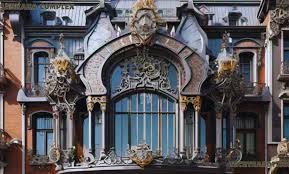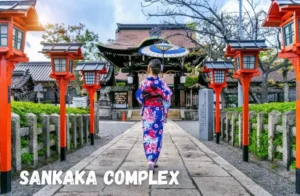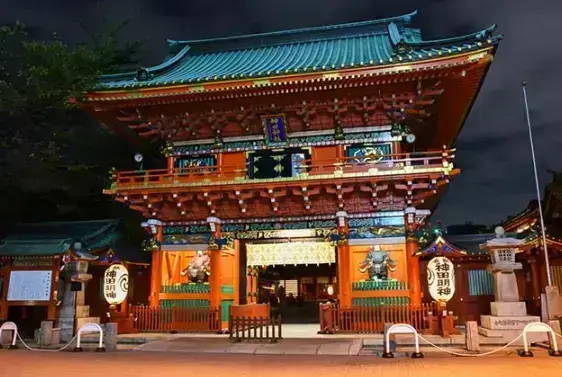The Sankaka Complex is a fascinating place that many people want to learn about. In this blog post, we will explore the Sankaka Complex, its history, and why it is so important. The Sankaka Complex has many secrets hidden in its ancient stones and structures.
Understanding the Sankaka Complex is not just about looking at old buildings. It’s about discovering the stories and events that shaped this amazing place. Join us as we dive into the world of the Sankaka Complex and uncover its many mysteries.
What Is the Sankaka Complex? An Introduction
The Sankaka Complex is a special place that many people are curious about. This area includes old buildings and structures that have been around for a long time. It’s not just one building but a whole collection of them, each with its own story.
The Sankaka Complex is important because it helps us learn about the past. People used to live and work here, and they left behind clues about their lives. By looking at the Sankaka Complex, we can understand how people lived many years ago.
Exploring the Sankaka Complex can feel like going on a treasure hunt. Each part of the complex tells us something new and exciting about history. This makes it a fascinating place to study and visit.
History Behind the Sankaka Complex
The history of the Sankaka Complex goes back many centuries. It started as a small set of structures and grew into a large and important site. Over time, many different people contributed to its development.
Important events and figures in history helped shape the Sankaka Complex. Legendary leaders and major battles occurred here, making it a key part of history. Learning about these events helps us understand why the complex is so significant today.
The evolution of the Sankaka Complex shows how people’s lives and societies changed over time. Each era left its mark on the complex, making it a valuable historical treasure.
Where Is the Sankaka Complex Located?
The Sankaka Complex is located in a region with unique geographical features. You can find it in an area with mountains, rivers, or plains that have shaped its development. This special location made the complex an important place.
The geographic features around the Sankaka Complex influenced how it was built. The natural environment provided materials and resources that helped shape its structures. This connection between geography and architecture is a key part of what makes the complex unique.
Understanding the location of the Sankaka Complex helps us appreciate its history and design. The surroundings played a big role in how the complex evolved over time.
How Did Geography Shape the Sankaka Complex

Geography has a big impact on the Sankaka Complex. The natural features of the land, like mountains and rivers, influenced how and where the buildings were constructed. These elements played a role in the design and layout of the complex.
Building materials were chosen based on what was available in the area. For example, rocks and wood from nearby sources were used in construction. This means the Sankaka Complex is closely connected to its natural surroundings.
The geography also affected the social and cultural aspects of the complex. The location helped shape the way people lived and interacted within the Sankaka Complex.
The Culture of the Sankaka Complex
The Sankaka Complex is rich in cultural significance. It serves as a hub for various traditions, artistic expressions, and spiritual practices. Many cultural events and ceremonies have taken place here over the centuries.
Art and crafts from the Sankaka Complex reflect the creativity and skills of the people who lived there. These cultural elements are an important part of its history and help us understand its significance.
By studying the cultural aspects of the Sankaka Complex, we gain insights into the values and practices of the past. This helps us appreciate the complex’s role in preserving cultural heritage.
Social Life in the Sankaka Complex
Life in the Sankaka Complex was shaped by intricate social structures. Different groups of people lived and worked together, each contributing to the community in unique ways. This social organization helped the complex thrive.
The social structures within the Sankaka Complex included various roles and responsibilities. From leaders to craftsmen, each person had an important part to play. These roles helped maintain the complex’s daily operations and cultural activities.
Understanding the social life of the Sankaka Complex gives us a glimpse into how people interacted and lived together. It highlights the complexity and richness of their community life.
Traditions and Rituals at the Sankaka Complex
Traditions and rituals play a big role in the Sankaka Complex. Many special ceremonies and practices have been held here over the years. These traditions are an important part of the complex’s cultural heritage.
The Sankaka Complex is known for its unique rituals that reflect the beliefs and values of its past inhabitants. These practices often involve art, music, and dance, making them an integral part of the complex’s history.
Exploring these traditions and rituals helps us understand the cultural significance of the Sankaka Complex. They offer a window into the spiritual and social life of the people who lived there.
Architecture of the Sankaka Complex
The architecture of the Sankaka Complex is both impressive and unique. It features monumental structures with intricate carvings and designs. These architectural elements showcase the skill and creativity of its builders.
Different styles and techniques were used in the construction of the Sankaka Complex. Traditional methods and local materials were employed to create its distinctive look. This blend of styles makes the complex stand out.
Comparing the architecture of the Sankaka Complex to other historical sites reveals its unique characteristics. It highlights the complex’s role in the broader history of architecture and design.
Building Techniques Used in the Sankaka Complex
Building techniques in the were innovative and practical. The ancient builders used local materials and traditional methods to construct the structures. This approach made the complex both durable and harmonious with its environment.
Construction methods included carving stone and shaping wood to fit specific designs. These techniques were adapted to the region’s geographic and environmental conditions, showing the builders’ ingenuity.
Studying these building techniques helps us appreciate the skill involved in creating the It also provides insights into how ancient people adapted their methods to their surroundings.
Comparing the Sankaka Complex to Other Historical Sites
When comparing the to other historical sites, its unique features stand out. The combination of architectural styles, cultural significance, and geographic location makes it different from other complexes.
Each historical site has its own story and significance, but the offers a special blend of elements. Its distinctive design and historical context set it apart from similar sites.
Understanding these differences helps us appreciate what makes the unique. It also highlights its importance in the broader context of historical and cultural heritage.
Economic Impact of the Sankaka Complex
The has a significant economic impact on its region. It supports various activities like trade, agriculture, and craftsmanship. These economic activities help sustain the complex and the local community.
The complex also plays a role in the local and regional economies. It provides jobs and supports businesses that cater to visitors and locals. This economic support helps maintain the complex’s cultural and historical value.
In modern times, the remains economically important, especially through tourism. Visitors from around the world come to see its historical and cultural treasures, contributing to its continued relevance.
How the Sankaka Complex Affects the Local Economy
The affects the local economy in several ways. It provides jobs and supports businesses related to tourism, such as hotels and restaurants. These businesses benefit from the influx of visitors interested in the complex.
Local artisans and craftsmen also gain from the complex’s economic activities. They create and sell goods that reflect the region’s culture and history, helping to preserve traditional skills.
The economic benefits of the extend beyond the immediate area. Its influence on the broader region helps support various industries and contribute to local development.
Modern Economic Importance of the Sankaka Complex
Today, the is a major economic asset. Tourism plays a big role in its modern economic importance. Visitors come to explore its history and cultural significance, bringing revenue to the area.
The complex also contributes to educational and research activities. Scholars and students visit to study its historical and architectural features, adding to its economic impact.
Maintaining the economic relevance requires ongoing efforts. This includes promoting tourism, preserving its cultural heritage, and supporting local businesses connected to the complex.
Environmental Impact of the Sankaka Complex
The interacts with its natural environment in various ways. Its construction and maintenance have an impact on the surrounding ecosystem. Balancing these effects is important for preserving the area’s environmental health.
Efforts are made to ensure that the complex’s activities do not harm the environment. This includes using sustainable practices and managing natural resources carefully.
Preserving the environmental integrity of the is crucial. It helps maintain the natural beauty of the area and ensures that future generations can enjoy and learn from it.
How the Sankaka Complex Interacts with Nature
The has a special relationship with its natural surroundings. The design and layout of the complex were influenced by the geography and climate of the area. This connection reflects a harmonious balance between human activity and nature.
Natural features, such as rivers and mountains, played a role in the complex’s development. They provided materials and influenced construction techniques, making the complex a part of its environment.
Understanding this interaction helps us appreciate how the was built with respect for nature. It also highlights the importance of preserving this balance for future generations.
Efforts to Preserve the Sankaka Complex
Preserving the is an ongoing effort. Various initiatives aim to protect and maintain its historical and cultural significance. This includes restoring damaged areas and safeguarding its structures from decay.
Conservation efforts also focus on environmental preservation. This involves managing natural resources and implementing sustainable practices to protect the surrounding ecosystem.
These preservation efforts are essential for ensuring the continued existence. They help maintain its legacy and allow future generations to experience and learn from it.
The Sankaka Complex in Today’s World
Today, the remains an important cultural and historical site. It attracts visitors from around the world who come to learn about its history and significance. This ongoing interest helps keep the complex relevant and vibrant.
Modern technology and research continue to shed light on the complex’s mysteries. New discoveries and studies enhance our understanding of its past and contribute to its preservation.
The role in today’s world highlights its enduring importance. It serves as a bridge between the past and the present, offering valuable insights into ancient civilizations.
Current Research on the Sankaka Complex
Research on the is ongoing and provides new insights into its history and significance. Scholars and archaeologists study its structures, artifacts, and historical records to learn more about the complex.
These research efforts contribute to a deeper understanding They help uncover details about its construction, cultural practices, and historical events.
Current studies also focus on the complex’s preservation and conservation. This research is crucial for ensuring that the remains a valuable resource for future generations.
The Sankaka Complex as a Tourist Attraction

The is a popular tourist attraction. Visitors come to explore its ancient buildings and learn about its history. This interest in the complex helps support local businesses and contributes to the region’s economy.
Tourism at the offers educational opportunities. Visitors can gain insights into ancient civilizations and cultural practices, making it a valuable destination for learning.
Maintaining the complex’s appeal to tourists involves ongoing efforts. This includes preserving its features, providing educational information, and managing visitor access.
Future of the Sankaka Complex: Challenges and Opportunities
The future of the involves both challenges and opportunities. Preservation and conservation efforts are crucial for maintaining its historical and cultural value. Addressing these challenges requires collaboration and innovation.
Opportunities for the complex include expanding educational and tourism programs. These initiatives can enhance its visibility and attract more visitors, contributing to its continued relevance.
Ensuring the future of the involves balancing development with conservation. By addressing current challenges and exploring new opportunities, the complex can continue to thrive and inspire future generations.
Conclusion
The is a special place full of history, culture, and beauty. It helps us learn about how people lived a long time ago and what they valued. By exploring the complex, we can understand more about the past and appreciate the incredible things people built.
Taking care of the is important so future generations can enjoy it too. It’s like preserving a treasure for everyone to see and learn from. Let’s keep exploring and protecting this amazing site so that it remains a valuable part of our history for years to come!




